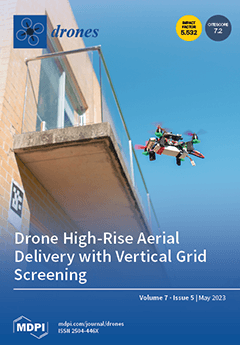Light Detection and Ranging (LiDAR) points and high-resolution RGB image-derived points have been successfully used to extract tree structural parameters. However, the differences in extracting individual tree structural parameters among different tree species have not been systematically studied. In this study, LiDAR data
[...] Read more.
Light Detection and Ranging (LiDAR) points and high-resolution RGB image-derived points have been successfully used to extract tree structural parameters. However, the differences in extracting individual tree structural parameters among different tree species have not been systematically studied. In this study, LiDAR data and images were collected using unmanned aerial vehicles (UAVs) to explore the differences in digital elevation model (DEM) and digital surface models (DSM) generation and tree structural parameter extraction for different tree species. It was found that the DEMs generated based on both forms of data, LiDAR and image, exhibited high correlations with the field-measured elevation, with an R
2 of 0.97 and 0.95, and an RMSE of 0.24 and 0.28 m, respectively. In addition, the differences between the DSMs are small in non-vegetation areas, whereas the differences are relatively large in vegetation areas. The extraction results of individual tree crown width and height based on two kinds of data are similar when all tree species are considered. However, for different tree species, the Cinnamomum camphora exhibits the greatest accuracy in terms of crown width extraction, with an R
2 of 0.94 and 0.90, and an RMSE of 0.77 and 0.70 m for LiDAR and image points, respectively. In comparison, for tree height extraction, the Magnolia grandiflora exhibits the highest accuracy, with an R
2 of 0.89 and 0.90, and an RMSE of 0.57 and 0.55 m for LiDAR and image points, respectively. The results indicate that both LiDAR and image points can generate an accurate DEM and DSM. The differences in the DEMs and DSMs between the two data types are relatively large in vegetation areas, while they are small in non-vegetation areas. There are significant differences in the extraction results of tree height and crown width between the two data sets among different tree species. The results will provide technical guidance for low-cost forest resource investigation and monitoring.
Full article





